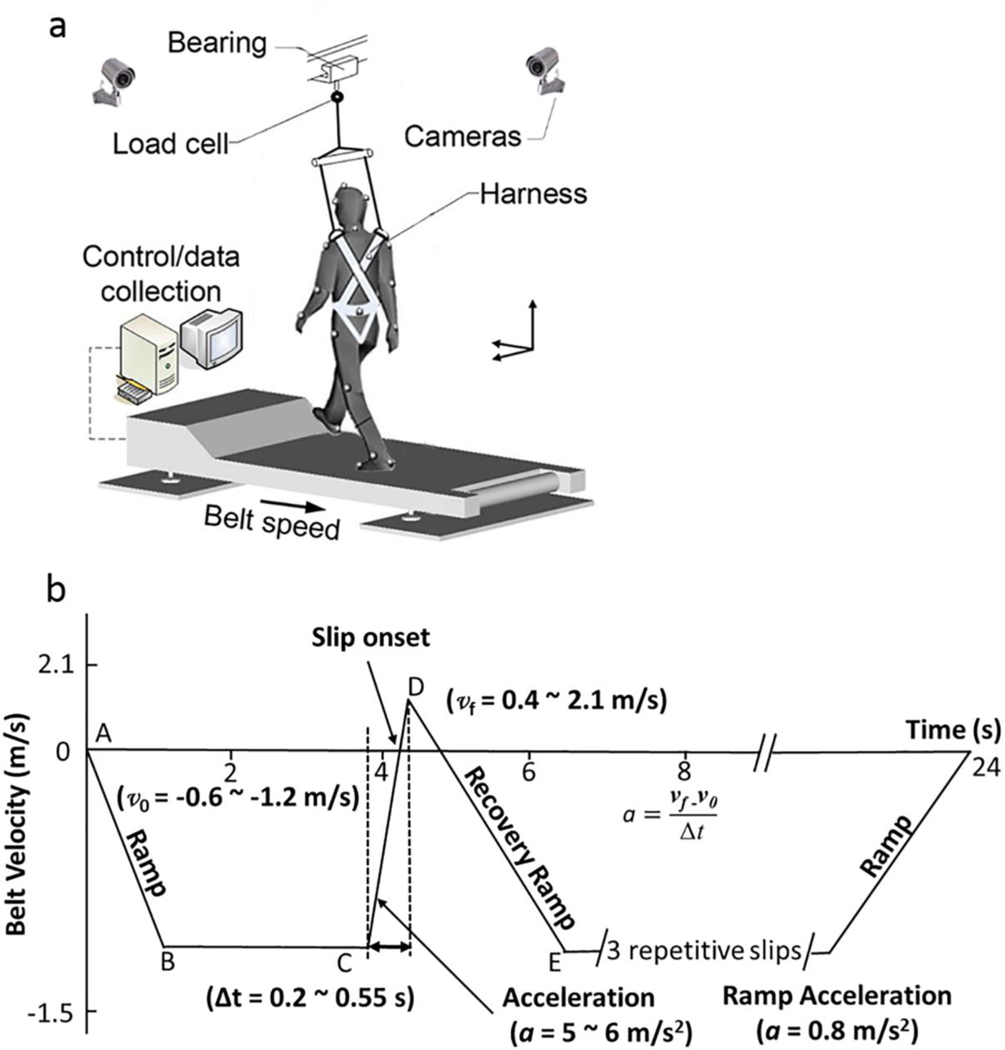Fig. 1.
(a) The computer-programmed treadmill (ActiveStep, Simbex, Lebanon, NH) used for treadmill-slip perturbation training and treadmill walking. (b) The profile of one block of four treadmill slips. Each slip on the treadmill began with 1.3–2 seconds ramping-up duration followed by three to five steps of steady state walking on a backward-moving belt at one of the preset speeds (−0.6 m/s, −0.8 m/s, −1.0 m/s, or −1.2 m/s, negative sign indicated that the moving direction of the treadmill belt was opposite to the direction of participants’ COM). The preset speeds were selected by the participants as their most comfortable walking speed on the treadmill. Without warning, the belt speed would abruptly reverse the direction (accelerating forward) to produce a single “slip-like” perturbation. The perturbation intensity of each training profile was determined by two factors, the acceleration of the belt (at two levels: 5 or 6 m/s2) and the duration of its application (ranged from 0.2–0.55 s). After each acceleration, the belt deaccelerated at 0.8 m/s2 to the previous steady-state walking speed. The next “slip” occurred following another three to five steps of steady-state walking. There was a total of two or four slips in each block.

